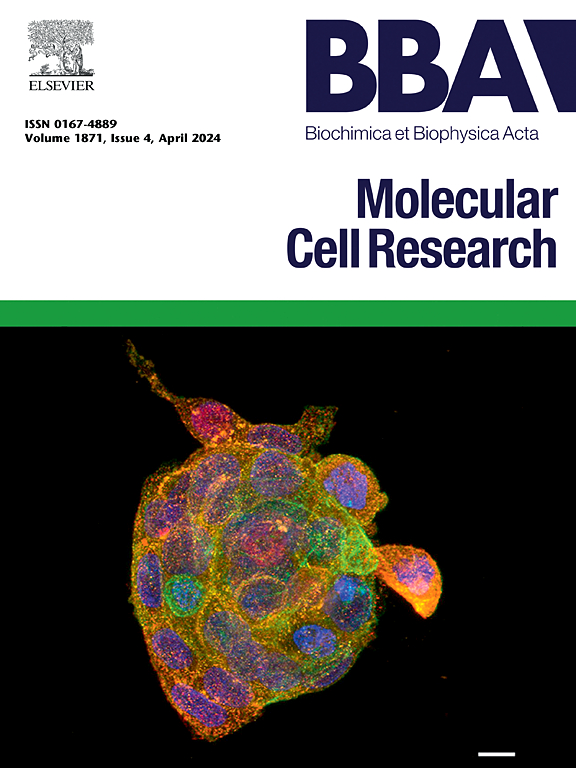EML1在神经系统微管稳定和囊泡运输中的多重作用
IF 3.7
2区 生物学
Q1 BIOCHEMISTRY & MOLECULAR BIOLOGY
Biochimica et biophysica acta. Molecular cell research
Pub Date : 2025-08-24
DOI:10.1016/j.bbamcr.2025.120048
引用次数: 0
摘要
微管相关蛋白EML1是EML家族的重要成员,在细胞骨架调控和神经发育中起关键作用。在神经发育过程中,EML1的表达具有时空特异性,其功能异常与皮层下带异位等神经发育障碍密切相关。本文系统综述了EML1的结构特点和生物学功能。结构研究表明,EML1含有独特的HELP-WD和TAPE结构域,这是其与微管结合和功能性能的基础。在功能上,EML1通过多种机制调节微管稳定性。此外,EML1还参与调节细胞内物质运输——维持运输路径的稳定性,协调运动蛋白的功能,调节高尔基相关运输。这些发现揭示了EML1在细胞生理过程中的多重作用,为理解相关疾病的发病机制提供了新的视角。未来的研究应集中于阐明EML1的确切作用机制及其作为治疗靶点的潜力。本文章由计算机程序翻译,如有差异,请以英文原文为准。
Multiple roles of EML1 in microtubule stabilization and vesicle transport in the nervous system
Microtubule-associated protein EML1 is an important member of the EML family and plays a key role in cytoskeleton regulation and neural development. During neural development, EML1 expression is spatiotemporally specific, and its functional abnormalities are closely associated with neural developmental disorders such as subcortical band heterotopia. This article systematically reviews the structural characteristics and biological functions of EML1. Structural studies have shown that EML1 contains unique HELP-WD and TAPE domains, which underlie its binding to microtubules and functional performance. Functionally, EML1 regulates microtubule stability through multiple mechanisms. Moreover, EML1 is also involved in regulating intracellular material transport—maintaining the stability of transport tracks, coordinating the function of motor proteins, and regulating Golgi-related transport. These findings reveal the multiple roles of EML1 in cellular physiological processes and provide a new perspective for understanding the pathogenesis of related diseases. Future research should focus on elucidating the precise EML1 action mechanisms and its potential as a therapeutic target.
求助全文
通过发布文献求助,成功后即可免费获取论文全文。
去求助
来源期刊
CiteScore
10.00
自引率
2.00%
发文量
151
审稿时长
44 days
期刊介绍:
BBA Molecular Cell Research focuses on understanding the mechanisms of cellular processes at the molecular level. These include aspects of cellular signaling, signal transduction, cell cycle, apoptosis, intracellular trafficking, secretory and endocytic pathways, biogenesis of cell organelles, cytoskeletal structures, cellular interactions, cell/tissue differentiation and cellular enzymology. Also included are studies at the interface between Cell Biology and Biophysics which apply for example novel imaging methods for characterizing cellular processes.

 求助内容:
求助内容: 应助结果提醒方式:
应助结果提醒方式:


